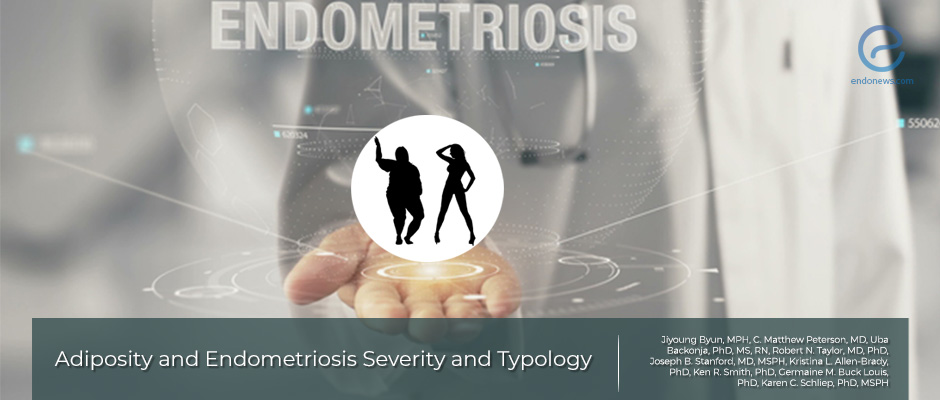Adiposity, endometriosis type and severity
Mar 5, 2020
Adiposity and type and stage of endometriosis
Key Points
Importance:
- Etyopathologic mechanisms, relations and risk factors of endometriosis still remain a key research priority.
Highlights:
- As a risk factor; the relationship between the types and stages of endometriosis and adiposity appears to be more complicated than already known.
What's done here:
- A cross-sectional study planned among women with no prior diagnosis of endometriosis and the results collected from fourteen clinics around Utah examined in order to study the inverse effect of adiposity versus endometriosis.
Key results:
- This study is a pioneer that focuses on the relation between women's adiposity and the severity, typology of endometriosis.
- Women with versus without incident endometriosis have the lowest anthropometric measures and body composition indicators.
- Women who diagnosed stage 2 and 3 endometriosis have higher anthropometric/body composition indicators when compared to women diagnosed in stage 1 and 4 endometriosis.
- Women who diagnosed superficial endometriosis have the highest indicators while women with ovarian endometriosis and deeply infiltrated endometriosis have the lowest.
Strength and Limitation:
- Adiposity not only measured by BMI but 19 different adiposity measures used in the study, an important strength.
- Cases being from a certain localized part of the world limits the generalization of the results, overlapping confidence intervals may be due to inadequate statistical power.
- Authors think that there may be a misclassification bias in endometriosis staging and typology.
Lay Summary
Dr. Jiyoung from the division of Public Health, Department of Family and Preventive Medicine of the University of Utah, planned a prospective cross-sectional study to assess whether there is an inverse relationship between the adiposity and endometriosis. The results of the study are published in the "Journal of Minimal İnvasive Gynecology".
To reveal that if adiposity is a risk factor for initiating endometriosis, 495 women from 14 clinical centers in Salt Lake City, Utah and San Francisco California, were enrolled in the operative cohort of the ENDO (Endometriosis, Natural History, Diagnosis, and Outcomes) study. After excluded subjects, the study consists of 473 patients whereas only 190 of them diagnosed as endometriosis.
All patients underwent anthropometric measurements, body composition, and body fat distribution ratios before their laparoscopic surgery. After the laparoscopic diagnostic surgery, for women who diagnosed as endometriosis, surgeons filled a form, based on ASRM staging classification about the stage and the type of endometriosis.
The distribution of symptoms among women later diagnosed with endometriosis was pelvic pain (63%), pelvic mass (14%), menstrual irregularities (11), suspected myoma (5%), tubal ligation (4%), and infertility (3%).
After adjusting the data for age, race, and pregnancy history, the authors were not able to find any differences between adiposity measures and endometriosis stage or typology. However, the following patterns
were prominent:
- Women with endometriosis had the lowest anthropometric scores compared to women without endometriosis
- Women with stages I or IV endometriosis had the lowest anthropometric scores compared to others, among all endometriosis group.
"Further studies among diverse populations, capturing various adiposity measurements prior to endometriosis diagnosis, and ideally prior to disease development are needed to better understand the pathogenesis and associations that may indicate systemic involvement and potentially inform preventive strategies" concluded the authors.
Research Source: https://doi.org/10.1016/j.jmig.2020.01.002
adiposity body mass index body composition indicators body circumferences questionnaire anthropometric measures gynecologic laparoscopy laparotomy deep infiltrated endometriosis ovarian endometriosis superficial endometriosis.

